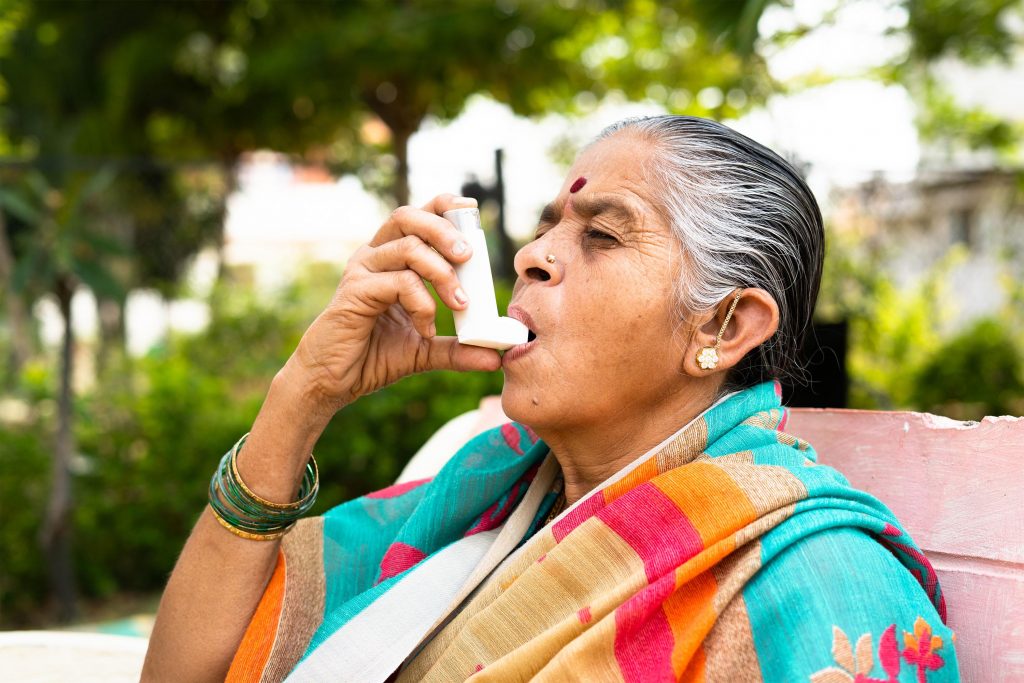India accounts for 15.69% of all chronic lung disease cases globally and 30.25% of total respiratory disease deaths, with COPD being the second most common cause of death in the country. The challenges in the field have increased in view of the looming new Covid variant, writes Mudit Mathur
India accounts for 15.69% of all chronic lung disease cases globally while accounting for 30.25% of total respiratory disease deaths, revealed the Global burden of disease report. It chronicles the high number of respiratory cases in India, potentially COPD and Asthma are 55.23 million and 35 million respectively with COPD being the second most common cause of death. The challenges in the field have increased in view of spread of a new variant of Covid in China and reports of some cases in India.

The experts of pulmonary sciences from all over India assembled at Lucknow in its recently held 15th Respiratory and Critical care update 2023, hosted by Midland Healthcare and Research Centre under the aegis of Surya Foundation. The day-long scientific sessions discussed various advancements and challenges to treat Chronic Respiratory disease like COPD, Asthma, ILD, Lung Cancer, Tuberculosis and others are becoming increasingly prevalent posing challenge to evolve new strategies for tackling these diseases effectively. The global burden of invasive fungal infections (IFIs) has shown an upsurge in recent years due to the higher load of immune-compromised patients suffering from various diseases.
While highlighting achievements in the field of pulmonary sciences, Organising Secretary of 15th Respiratory & Critical Care update 2023, Dr B.P Singh, Director and Chairman of Midland Healthcare and Research Centre, Lucknow, welcomed the eminent participants. Dr Singh highlighted that countless advances in contemporary medicine and especially in critical care achieved during the last decades have contributed not only to longer survival of patients, but also to the increasing incidence of opportunistic infections caused by fungi. Critically unwell patients are at increased risk of developing invasive fungal infections with increased risk of morbidity and mortality.
Former Director of All India Institute of Medical Sciences, & Member of the National Task Force & Empowered group for the Govt. of India for COVID-19, Dr Randeep Guleria, Chairman-Institute of Internal Medicine and Respiratory & Sleep Medicine highlighted about Community-Acquired Pneumonia (CAP) as a common culprit causing approximately 40% of patients with CAP requiring hospitalisation and 5% of these need support of intensive care unit (ICU), primarily due to shock or the need for invasive or non-invasive mechanical ventilation. He also discussed the role of rapid microbiological techniques (multiplex PCR) when dealing with multi-drug resistance pathogens and in guiding targeted antibiotic therapy.
While echoing the thoughts expressed by Dr Guleria, Dr Sharmili Sinha, a senior consultant in the department of critical care at Apollo, Bhubaneshwar, underlined the role of non-invasive ventilation, high flow nasal oxygenation, prone ventilation and lung protective ventilation strategies in acute respiratory distress syndrome (ARDS). ARDS is a serious lung condition where fluid builds up inside the tiny air sacs of the lungs that causes low blood oxygen.
Dr Prahlad Prabhudesai (Senior Consultant, Leelawati Hospital, Mumbai) said that the updates have zeroed in on Interstitial Lung Diseases (ILD) which is an umbrella term used for a large group of diseases that cause scarring (fibrosis) of the lungs. The scarring causes stiffness in the lungs which makes it difficult to breathe and get oxygen to the bloodstream and the damage from ILDs is often irreversible and gets worse over time. He spoke about a holistic approach, role of Bronchoscopy, transbronchial lung biopsy, transbronchial cryobiopsy and CT Thorax and multidisciplinary discussion to improve accuracy in diagnosis.
Stalwarts in the field of the likes of Dr Vigil Rahulan, KIMS, Hyderabad, shared the history and rise of lung transplant in India. The India Society of Heart and Lung Transplant reported that since 1994 till March 2023, 475 lung transplants have been done in India. While sharing the challenges, he also laid out simple solutions for better framework to aid our patients better.
Dr Apar Jindal and Dr Murali Krishna from MGM, Chennai, shared at great length the meticulous management of patients on Extracorporeal Membrane Oxygenation (ECMO), pre and post lung transplant while also emphasized on the need for more specialised transplant centres. ECMO is an advanced form of life support used mostly in patients with severe respiratory or cardiac failure when standard therapy fails. ECMO acts a bridge to transplant providing the entire spectrum of support in the form of blood oxygenation, decarboxylation and cardiocirculatory support while the patient awaits lung transplantation.
Dr. Vijay Hadda , Additional professor in the department of pulmonary and sleep medicine at AIIMS, Delhi shone the light on newer biologics in the form of Rituximab, Tocilizumab, Abituzumab, Imatinib, Eculizumab and Alemtuzumab in various CTD-ilds such as scleroderma, mixed connective tissue diseases, Rheumatoid Arthritis- ILD(RA-ILD) Dermatomyositis associated ILDs etc. Patients with ILD, mostly progressively, deteriorate with over reliance on long-term home oxygen therapy which is complicated by Pulmonary Arterial Hypertension (PAH) leading to unfavourable outcomes and causing high mortality and morbidity.
Dr. Raja Dhar, Director and HOD, Department of Pulmonology at Kolkata Medical Research Institute, enunciated the impact of Pulmonary Arterial Hypertension (PAH) on the quality of life and mortality in patients with lung diseases. PAH is a type of high blood pressure that affects the arteries in the lungs and the right side of the heart presenting as an increase blood pressure in the lungs adding to the breathlessness and discomfort of that patients. Newer therapies were discussed along with a need for a framework for better management.
Dr. Amrita Nene, HOD, Respiratory Medicine, Bombay Hospital laid out in distinct lines the judicious role of steroids in tuberculosis and held that it is a double-edged sword. While it possesses a great deal of benefits that could be rolled out to the patients in cases of tubercular meningitis, tubercular pericardial effusion and patients in adrenal tuberculosis and eventual adrenal insufficiency making steroids mandatory in some while it can also be harbinger of complications.
Dr. Ankit Sharma, from GB Pant Institute of PGMER, New Delhi, compared LUS with other imaging modalities, emphasizing on the several important advantages, such as real-time imaging, use of no-ionizing radiation, reduced equipment cost, portability, and bedside availability.
Dr. Khushboo Pilania, consultant radiologist and Founder of IZEN imagings and interventions, Noida, highlighted the key role of CT thorax and its optimal use in early diagnosis and consequent early intervention. Computed tomography (CT) is widely available and offers the potential for fast triage, robust, rapid, and minimally invasive diagnosis not only in Covid-19 but also in ILDs, extensive and fungal pneumonias amongst others. Furthermore, developments and progress integrating artificial intelligence (AI) with computer-aided design (CAD) software for diagnostic imaging allow for objective, unbiased, and rapid assessment of CT images. Early disease detection is highly important for patient prognosis, with better treatment outcomes and improved quality of life.
Dr Ashish Tandon, Sr. Consultant at the Haridaya Super-speciality Centre, Prayagraj, discussed the advent of Endobronchial Ultrasound (EBUS)-guided Fine Needle Aspiration Cytology (FNAC) and use of EBUS-guided cryobiopsy to enhance yield not only to precisely differentiate between tubercular or sarcoid associated lymphadenopathy but also in diagnosis and staging of cancers. It is a technique that uses ultrasound along with bronchoscope to visualize airway wall and structures adjacent to it allowing the pulmonologist to take biopsy and other samples under vision.
Dr. Suneel K Garg, senior consultant (Saiman Healthcare, Delhi), elaborated on how a well-orchestrated treatment based on clinical condition of the patient in cohort with the guidelines can improve patients’ outcomes.
The 15th respiratory critical care update imparted latest information and scientific updates to gear up pulmonologists to tackle with the leading challenges in the field of critical care with best possible use of the latest technology to serve patients with favourable outcomes.













